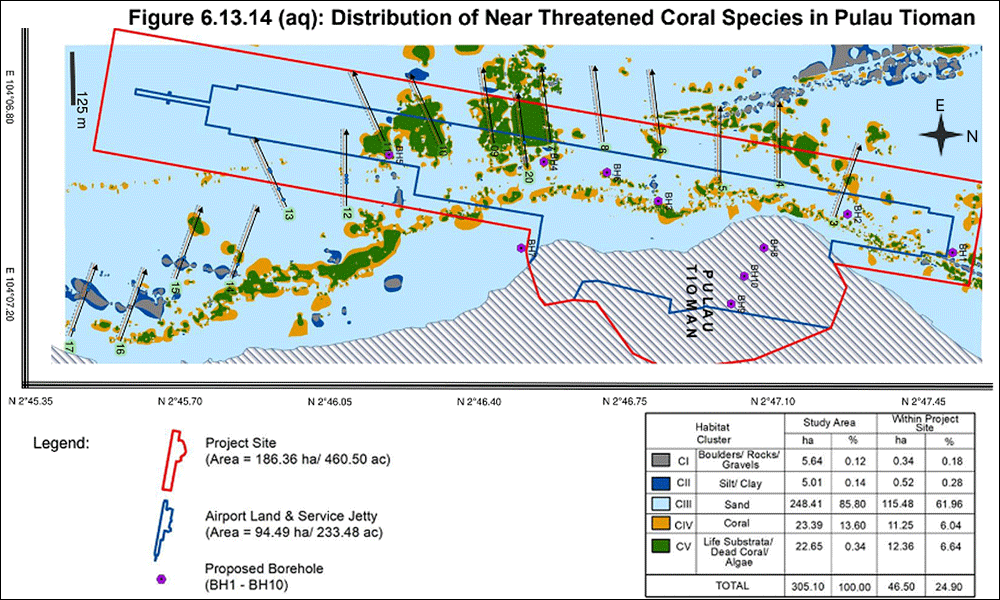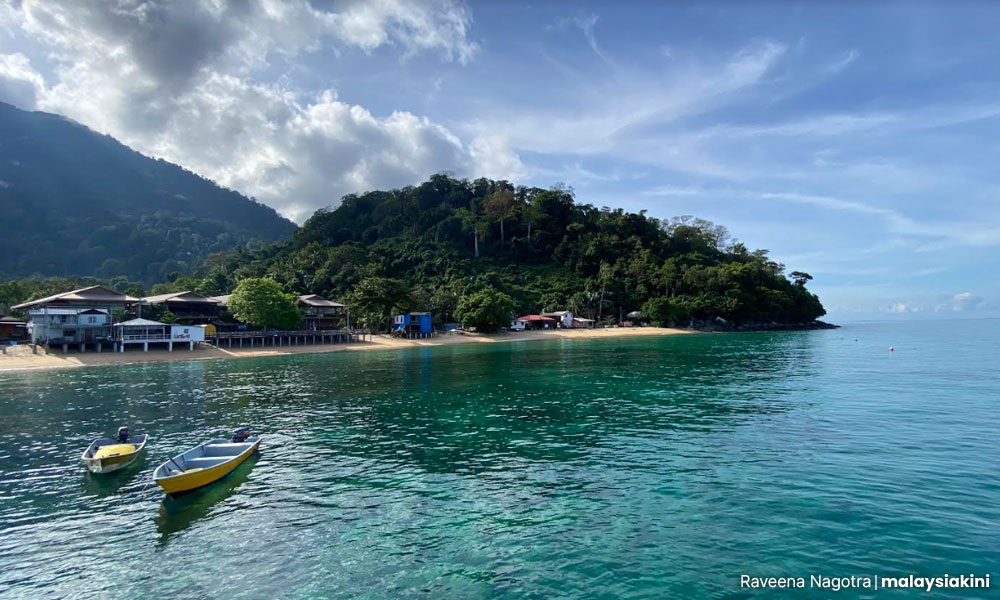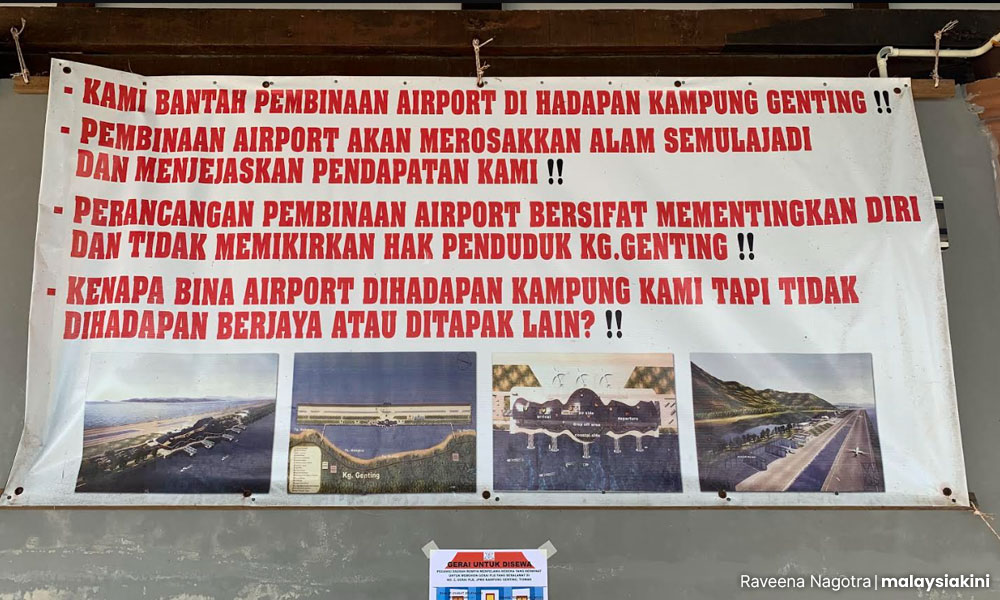The proposed Tioman International Airport will cause environmental damage and loss of habitat to hundreds of species of marine life on the island which was supposed to be a protected marine park.
According to the environmental impact assessment (EIA) of the project, 11.25ha of coral reefs and 12.36 ha of life substrates are situated within the project boundary, which will be reclaimed for airport development or affected by the reclamation activities.
As part of its marine conservation plan, the project’s proponent - Tioman Infra Sdn Bhd - proposed for corals within the project area to be reclaimed and relocated to a nearby island.
The recently submitted EIA identified 121 species of hard corals and 11 species of soft corals in the area.
Based on the IUCN Red List, most corals identified in the EIA were categorised as “Near Threatened”. Two species are listed as “critically endangered”, one “endangered” and 19 species that are “vulnerable”.

Only corals under the “vulnerable” category would be the focus of the translocation exercise to a nursery or an alternative propagation site.
“The project proponent shall continue monitoring the affected areas and also at coral relocation areas.
“Construction of the airport demands the relocation of corals within the reclamation territories of the project. However, the off-set programme should be targeted whereby only specific species of corals will be assigned with priority and that demographic restoration includes procedures to supplement reefs with pre-existing genotypes,” it said.
In addition, as many as 125 species of fish from 24 families were recorded, 22 species of grass and seaweed and algae, in addition to being a habitat for seven species of mammals and several species of turtles.
Ecological damage
The report states, based on the impact assessment for the quarrying and reclamation phase for the purpose of NTIA development, the affected marine life will cause a loss of ecosystem services, an increase in sediment and turbidity that damages coral reefs as well as an oil spill that will cause toxicity and a reduction in dissolved oxygen in the water.
“The construction phase will cause noise pollution and vibrations, which will stress and change the behaviour of marine life.
“Furthermore, in the operational phase, artificial lighting will interfere with the photosynthetic activity of coral reefs, the threat of water pollution and alteration of hydrodynamic patterns as well as changes or impacts resulting from project development may affect habitat recovery,” it said.
Meanwhile, the EIA added that there have been sightings of turtles near Kampung Paya to the immediate north of the project site and a loggerhead turtle was spotted during the field survey, indicating their likely presence.
The main areas of turtle nesting are north of the project site at Coral Island and on the eastern side of Pulau Tioman at Kampung Juara.
The EIA noted that turtle feeding grounds could be reduced in the project area due to the reclamation activities, adding that high underwater noise volume during construction may disorient them.
“Heavy vessel traffic may cause injury from propeller strikes or even cause death from collision with vessels. Turtles may become disoriented once there are more light sources which causes them to head further inland.
“Wastes dumped into the sea, especially plastic materials could entangle turtles or constrict them, possibly leading to their death. Turtles have also been known to ingest plastic believing them to be jellyfish which are among their diet,” it said.
The report claimed that Kampung Genting and Kampung Paya - the two villages most affected by the project (view the interactive map above for locations) - were not particularly rich in marine life forms as there were a lot of coral rubbles due to past disturbance.
“With the development, the marine ecosystem under the areas for reclamation will be gone, which is the reason that off-set programmes will be implemented to translocate the rare coral species to similar marine environments around the island for their sustainability.
“This will be carried out over a period of six to twelve months before any construction work begins,” it said.
More reclamation needed
According to the EIA report, the proposed airport would cover an area of 186.36ha, of which 76 percent - 142.70ha - will involve reclaimed land.
The EIA revealed a larger proposed airport from an earlier draft of the project’s terms of reference, which stated that the project will be 94.49ha in size, of which 65.77ha will involve reclaimed land.
The EIA states that the increased area was to accommodate sea slopes underwater and that the additional acreage was communicated to PLANMalaysia in August 2022.
“The additional acreage was for the embankment of the cut slopes and rock revetment; both areas being at the outer edge of the airport plinth, and mostly underwater in the sea,” it said.

Lying just off the coast between Kampung Paya and Kampung Genting, the airport proposes a runway of 2.5km in length and 45m in width to cater to Code 4C aircraft with a flight range from 5,100km to 6,100km.
The EIA adds that the project aims to cover flights to and from airports in Malaysia, Asean countries, eastern India, south to mid-China, and west Australia.
The projected tourist arrival for 2030 was forecasted at 555,986, up from around 300,000 in 2020.
The EIA does not discuss in detail about the introduction of new infrastructure or upgrades to existing facilities to provide clean water, sewage treatment, and waste management which were necessary to cope with the doubling of visitors.
Instead, the EIA relied on the vision set forth by the Tioman Island Cluster Special Area Plan 2030, often abbreviated as RKK-GPT 2030, to describe the infrastructure needed.
RKK-GPT 2030 was authored in 2020 by PLANMalaysia, an agency of the Local Government and Housing Ministry.
Residents divided
Pulau Tioman has a population of approximately 2,705.
From a social survey conducted in 2023 by Asia Pacific Environment Consultants (ASPEC), 53 percent out of 300 respondents on the island accept the airport project, while 31 percent of respondents disagreed and the remaining 16 percent had no opinions.
However, the EIA notes that the highest percentage of those agreeing with the project came from Kampung Tekek - the most developed part of the island which is relatively far from the project area and hosts a major resort that is linked to the project proponent.
Respondents from Kampung Paya and Kampung Genting - the populated areas closest to the project site - were generally unfavourable towards the project.
ASPEC said that local community leaders indicated they were not opposed to the proposed airport but disagreed with the proposed location, especially near to Kampung Genting and Kampung Paya, which could affect their business.

It added that Kampung Genting and Kampung Paya respondents also resisted due to potential loss of environment attributes and a dwindle on tourist arrivals to their resorts during the construction phase.
“A total of 53 percent of households and 61 percent of business operators agreed with the project from Kampung Paya, Kampung Genting, and Kampung Tekek, but mostly from Kampung Tekek. However, they foresee there could be adverse trade-offs regarding the environment.
“They indicated that the project could bring in many tourists to act as a catalyst for more development on the Island that will benefit them economically in the long-term, but for the immediate period of construction, they could be adversely affected.
“In contrast, the other settlements such as Kampung Juara, Kampung Salang, and Kampung Mukut welcomed the project, especially during the construction phase as they indicated that more tourists would likely come to their resorts in lieu of Kampung Paya and Kampung Genting,” it said.
Marine Park in limbo
Malaysiakini previously reported that Tioman Infra Sdn Bhd is a wholly-owned subsidiary of Tioman Hill Resort Sdn Bhd, which is 50 percent owned by the Berjaya Group. The rest is equally split between various members of the Pahang royal family through Aimvesco Sdn Bhd and the late Sultan Ahmad Shah.
The portion of the project involving reclaimed land sits in waters within the Tioman Marine Park boundaries. This meant that any development and marine activities, including harvesting marine resources within the boundaries are strictly regulated and the construction of the airport may require the redrawing of the boundaries.
However, the EIA states that the project proponents were granted approval by the Agriculture and Food Ministry in March 2022 to conduct the EIA prior to seeking approval from the National Advisory Council of Marine Parks and Marine Reserves to change the park’s status.

The EIA noted that the RKK-GPT 2030 considered the Pulau Tioman waters as a Level 1 environmentally sensitive area (ESA). Under PlanMalaysia’s guidelines, Level 1 ESA areas should not be developed.
According to the Universiti Malaya Maritime Research Centre (UMMaritime) paper published in 2007 that was cited by the EIA, Pulau Tioman is located in one of the world’s second-highest coral diversity hotspots.
“Its significance for coral conservation surpassed all other marine parks on the east coast of the peninsula in terms of coral diversity.
“As a Marine Park designated in 1994, any development activities in this area should carefully consider the need to protect and preserve its coral reefs,” read the EIA.
The EIA went on public display on June 21 and the public has until July 20 to study the document. It can be accessed here, but it cannot be downloaded or printed.
The Department of Environment is soliciting public opinion on the project through this online form. The deadline for submission is Aug 4.
On June 23, environmental group Reef Check Malaysia has since initiated an online petition against the project. At the time of writing, it has garnered 3,077 signatures. - Mkini



No comments:
Post a Comment
Note: Only a member of this blog may post a comment.